The sight of a baby chimpanzee—wide-eyed, playful, and eerily human-like—can spark an instant connection. Social media is awash with videos of chimpanzees wearing clothes, playing with toys, or hugging their human “owners,” often presented as heartwarming or cute. Documentaries like Chimp Crazy add fuel to this fascination, spotlighting exotic pet ownership as a controversial yet captivating phenomenon.
But behind the viral allure lies a darker reality. Keeping chimpanzees as pets is not only dangerous but also deeply unethical, with far-reaching consequences for the animals, their human caretakers, and global conservation efforts. With keeping chimpanzees as pets now becoming a hot topic in online discussions, it’s vital to dissect the layers of this controversial practice and explore the risks it poses.
The Allure of Chimpanzees as Pets
Why People Are Drawn to Chimps
It’s easy to see why the idea of keeping chimpanzees as pets is so enticing. With their human-like expressions, playful behavior, and undeniable charm, baby chimpanzees can feel like the ultimate exotic companion. Their antics in videos and documentaries often blur the lines between animals and humans, making them appear more like family members than wild creatures.
“People look at chimps and see themselves,” explains Dr. Jane Goodall, a renowned primatologist and conservationist. “Their expressive faces make people feel a connection, but this is a dangerous illusion.”
Social media has played a significant role in amplifying this illusion. Viral videos show chimps performing human activities—wearing clothes, opening presents, or being cradled like infants—creating an idealized image of them as domestic animals. This portrayal glosses over the complexities of their behavior and the inevitable challenges that arise as they grow.
The Harsh Reality of Chimp Ownership
What these videos and media portrayals don’t show is the harsh reality of keeping chimpanzees as pets. While they may start as small, manageable infants, chimps grow rapidly. By the age of eight, they are no longer cuddly companions—they’re powerful, unpredictable animals with immense strength, estimated to be four times greater than that of an adult human.
In private settings, this growing strength often leads to aggressive behavior. Many owners, overwhelmed by their chimpanzees’ development, attempt to contain them by chaining them up, confining them to cages, or subjecting them to physical discipline. These measures are not only cruel but also dangerous, as frustrated chimps often lash out with destructive force.
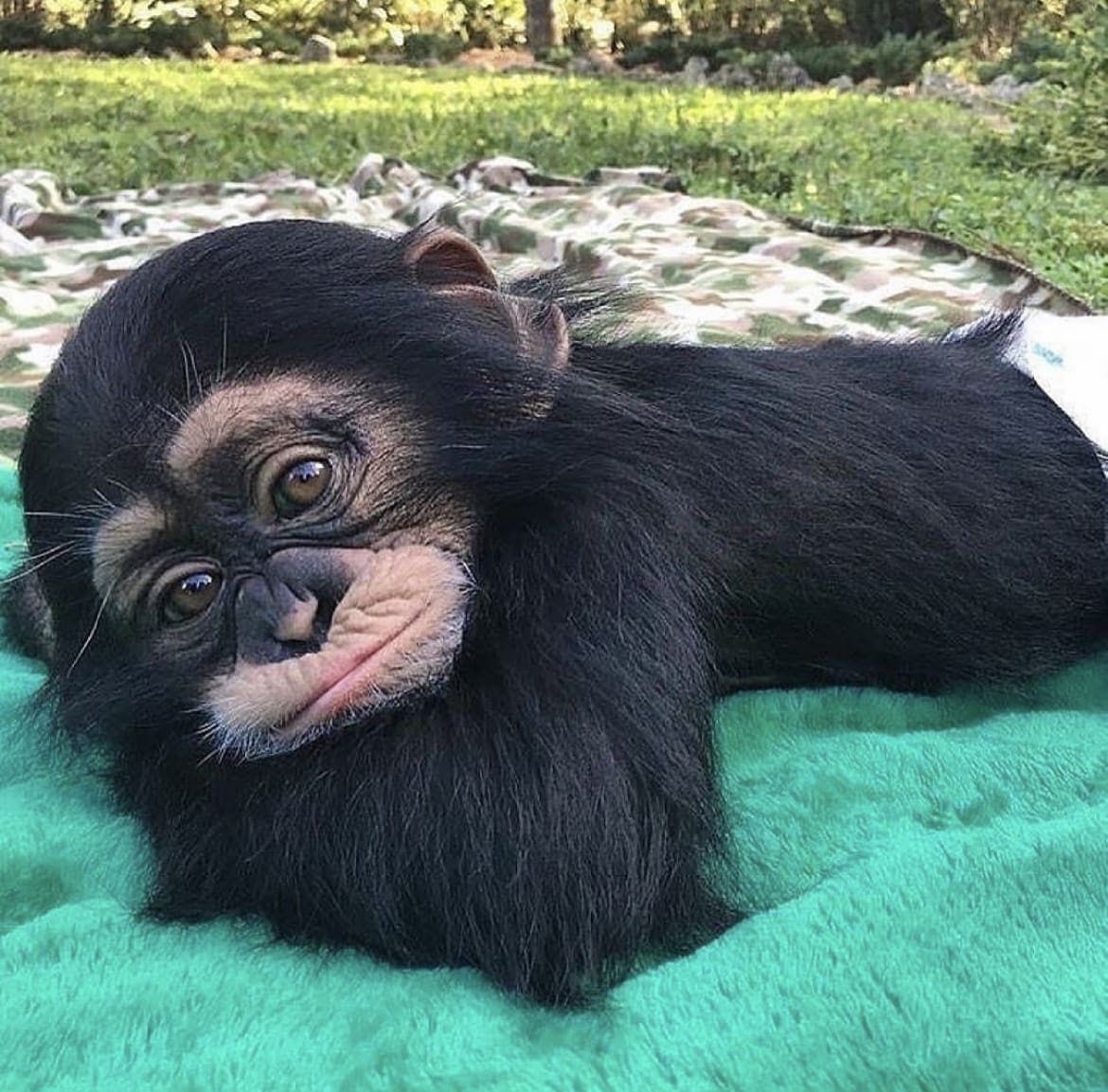
Legal and Ethical Concerns
A Patchwork of Laws in the U.S.
The legal status of owning chimpanzees as pets in the United States is a complex and inconsistent patchwork. While federal laws like the Endangered Species Act prohibit certain activities involving chimpanzees, such as their trade across state lines without permits, the rules governing private ownership vary widely by state.
Some states, including California and New York, have outright bans on keeping primates as pets. However, others—like Texas, Kansas, Idaho, and Alabama—still allow private ownership of chimpanzees with little more than a permit requirement. These lax regulations create loopholes that are often exploited, making it difficult for authorities to track and control private chimpanzee ownership.
This lack of uniformity poses significant challenges. Without strict laws and enforcement mechanisms, chimpanzees are easily trafficked and kept in inappropriate conditions, often hidden from public view. In these unregulated environments, their health, safety, and welfare are rarely a priority.
Ethical Dilemmas of Keeping Chimps as Pets
Even where chimpanzee ownership is legal, the ethical implications cannot be ignored. At its core, the practice of keeping a chimpanzee as a pet raises fundamental questions about our relationship with animals and the responsibilities we hold toward them.
Chimpanzees are highly intelligent, social creatures with complex emotional lives. In the wild, they live in dynamic groups of up to 120 individuals, forming intricate social bonds that mirror human communities in many ways. Removing a baby chimp from its natural habitat or separating it from its mother disrupts these bonds and inflicts lifelong psychological harm.
“Keeping primates as pets is detrimental to true wildlife conservation efforts,” says Dr. Jane Goodall. “Every chimp kept in a private home is one less ambassador for their species in the wild, where they belong.”
The ethical concerns extend beyond individual animals. The demand for chimpanzees as pets directly fuels the illegal wildlife trade, where poachers often kill adult chimps to capture their infants. For every baby chimp sold into captivity, an entire family group may have been destroyed, further threatening already endangered wild populations.
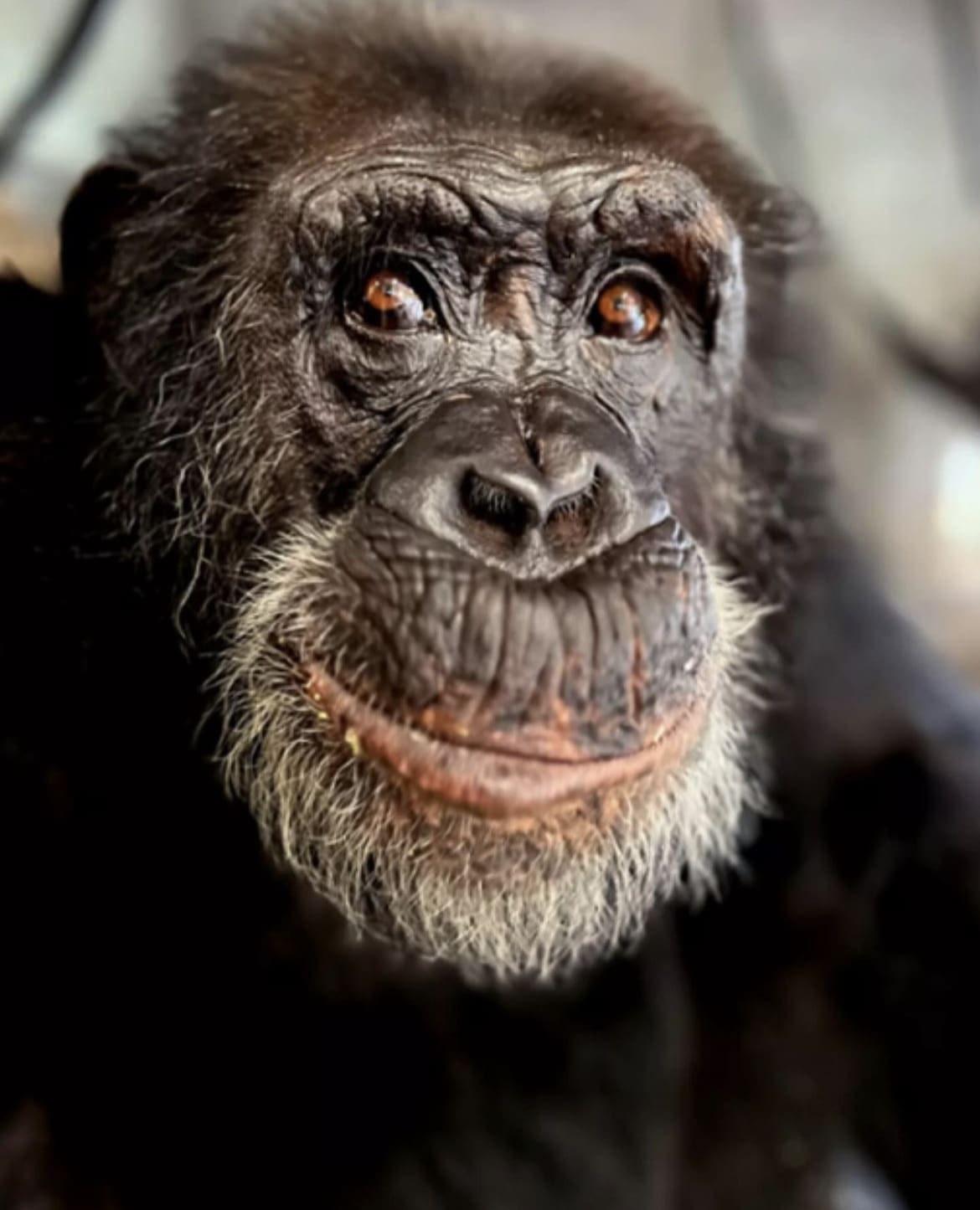
The High Cost of Chimpanzee Care
Financial and Logistical Challenges
The idea of owning a chimpanzee as a pet might seem exciting at first glance, but the reality is far from glamorous. Beyond the ethical and legal concerns, caring for a chimpanzee is a monumental financial and logistical challenge that most private owners are ill-equipped to handle.
According to experts, the annual cost of properly caring for a single chimpanzee can reach as high as $25,000. This includes expenses for specialized food, veterinary care, and appropriate housing that mimics their natural environment as closely as possible. However, most private owners cannot afford these costs, leading to substandard living conditions for the animals.
Even finding a veterinarian experienced with chimpanzees is a challenge. Chimps are complex creatures requiring specialized medical attention, which is often unavailable or prohibitively expensive for private individuals. Routine veterinary visits are essential, but many owners skip them altogether, jeopardizing the health and wellbeing of the animal.
And then there’s the time commitment. Chimpanzees can live up to 60 years in captivity, requiring a lifelong commitment from their owners. Unlike dogs or cats, whose care spans a decade or two at most, chimpanzees are a multi-generational responsibility—one that few owners are prepared to shoulder.
Psychological Toll on Chimps in Captivity
The cost of keeping chimpanzees as pets isn’t just financial—it’s also deeply psychological. Chimps are highly social animals that thrive in large groups. In the wild, they spend their days interacting with family members, playing, grooming, and foraging for food. In captivity, these natural behaviors are often impossible.
Isolated from their own kind, chimpanzees kept as pets frequently develop severe psychological issues. Save the Chimps, a leading primate sanctuary, reports that chimps separated from their mothers at a young age are particularly vulnerable. “Chimpanzees separated from their mothers during infancy often develop abnormal behaviors such as repetitive rocking and excessive hair plucking, as well as anxiety or depression,” the organization states.
These behaviors are a tragic reflection of their unmet social and emotional needs. Even when owners try to provide love and attention, they cannot replicate the complex social dynamics of a chimpanzee troop. The result is a life of frustration, loneliness, and emotional trauma for the animal.
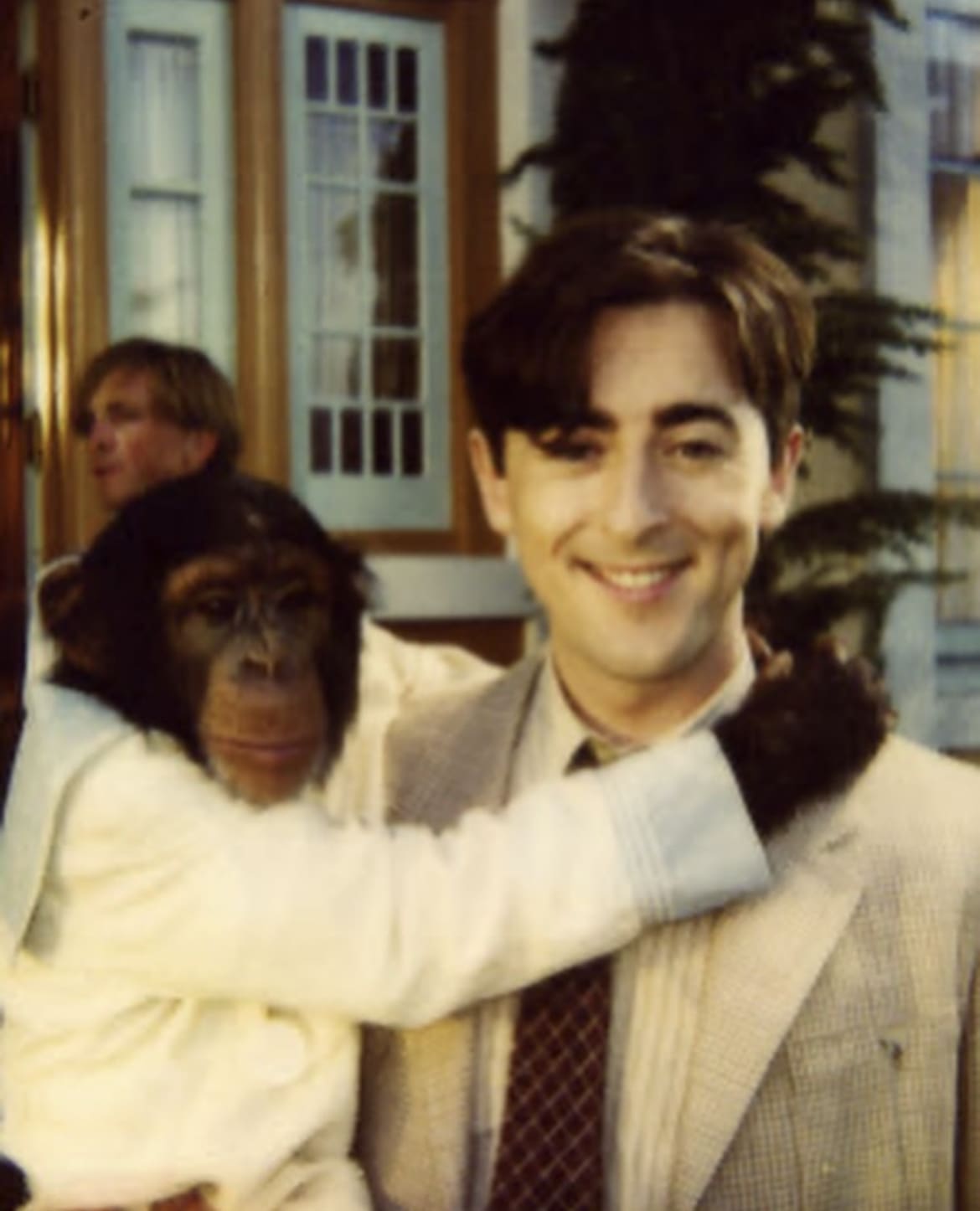
Public Safety Threats
The Unpredictable Danger of Chimpanzees
Chimpanzees, while undeniably intelligent and social, are also inherently wild animals with instincts and behaviors that can make them dangerous in domestic settings. As they mature, their strength increases exponentially—adult chimpanzees possess up to four times the strength of an adult human. This physical power, combined with their unpredictable nature, has led to numerous incidents of violence involving pet chimps.
One of the most infamous examples is the case of Travis, a 13-year-old chimpanzee who was kept as a pet in Stamford, Connecticut. Raised in a human household, Travis was often treated like a child, even sitting at the family dinner table. However, in 2009, Travis attacked his owner’s friend in an unprovoked fit of aggression, causing catastrophic injuries that made global headlines. This tragic event was a stark reminder that no amount of training or domestication can eliminate the natural instincts of a wild animal.
Underreported Incidents and Hidden Risks
While high-profile cases like Travis’s make headlines, many incidents involving pet chimpanzees go unreported. Since 1990, nearly 300 injuries caused by captive primates have been documented in the United States, according to animal advocacy groups. However, experts believe this number represents only a fraction of the actual incidents, as many cases are likely concealed by private owners who fear legal or social repercussions.
These attacks are not limited to owners alone. Friends, family members, and even neighbors have been injured in encounters with pet chimpanzees. In some cases, chimps have escaped their enclosures and wreaked havoc in nearby communities, posing a serious public safety threat.
The Cost of Human Error
Unlike domesticated animals, chimpanzees retain their wild instincts, which can be triggered by seemingly innocuous actions. A sudden movement, unfamiliar person, or even a piece of clothing can provoke a chimp into acting out. In domestic environments, where chimps are often improperly housed or inadequately restrained, the likelihood of an attack increases dramatically.
When attacks occur, the consequences are devastating. Victims often suffer life-altering injuries, including severe bites, facial disfigurement, and even amputations. For the chimpanzee involved, the outcome is often just as grim—many are euthanized following attacks, reinforcing the cycle of suffering caused by private ownership.
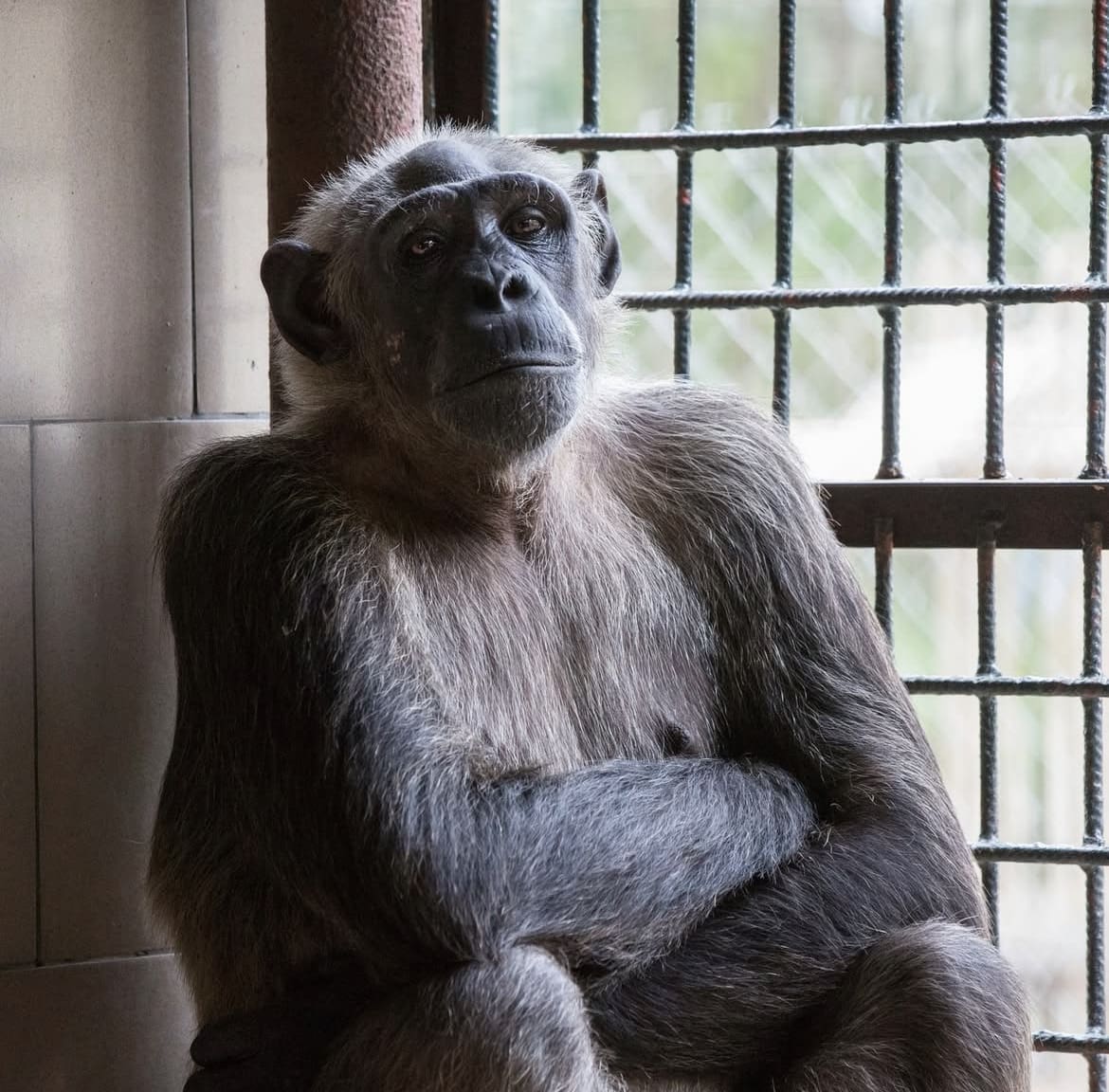
The Conservation Crisis
How the Pet Trade Harms Wild Populations
The practice of keeping chimpanzees as pets doesn’t just harm individual animals—it also has devastating effects on wild populations. To capture a baby chimp for the exotic pet trade, poachers often slaughter entire family groups. Adult chimps will fiercely defend their young, and in the process, multiple individuals are often killed. For every baby chimp sold into captivity, it’s estimated that up to ten chimps may die.
This method of capture has contributed significantly to the decline of wild chimpanzee populations. Once widespread across Africa, chimpanzees are now listed as endangered, with their numbers dwindling rapidly due to habitat loss, poaching, and the illegal wildlife trade. The demand for pet chimps fuels this cycle, decimating populations and threatening the survival of the species.
Captive Chimps: A Global Perspective
The scale of the issue becomes clearer when examining the statistics on captive chimpanzees. In the United States alone, approximately 1,382 chimpanzees are held in various settings, including zoos, sanctuaries, private homes, laboratories, and unaccredited facilities. Of these, only 260 are housed in accredited Association of Zoos and Aquariums (AZA) facilities, where they receive proper care and attention.
Globally, the situation is equally concerning. Japan, for example, has 302 chimpanzees living in zoos, amusement parks, research institutions, and sanctuaries. Together, the U.S. and Japan account for over 3,000 captive chimps—a staggering number considering their endangered status in the wild.
However, these figures are likely conservative. The clandestine nature of the exotic pet trade makes it difficult to obtain accurate statistics, as many chimpanzees are kept illegally or in unregistered facilities. This lack of transparency only exacerbates the problem, as it hinders efforts to enforce regulations and protect these animals.
Efforts to Address the Crisis
There is some hope on the horizon. Organizations like Project ChimpCARE and Save the Chimps are working tirelessly to rescue chimpanzees from private ownership and provide them with proper care in accredited sanctuaries. Over the years, they’ve made significant strides, including a 70% reduction in the number of chimps held in unaccredited roadside zoos.
Legislation is also evolving to combat the issue. The Captive Primate Safety Act, for example, aims to prohibit private ownership of primates and restrict their transport across state lines. If passed, it would mark a significant step forward in protecting chimpanzees from exploitation.
Despite these efforts, the demand for pet chimps persists, fueled by social media and a lack of public awareness about the consequences of this practice. As conservationists emphasize, true progress will require not only stricter laws but also a cultural shift in how we view these intelligent, wild creatures.
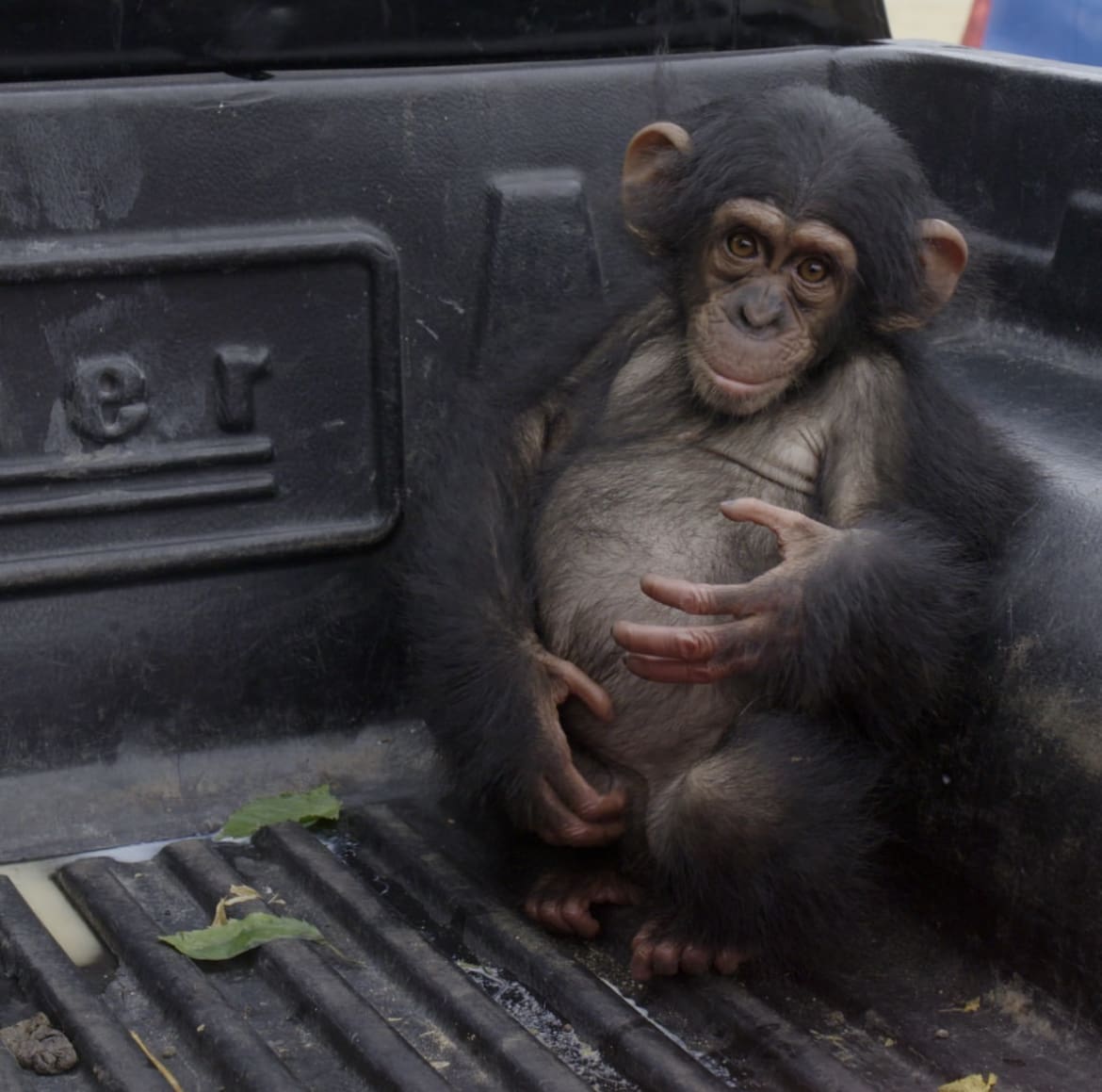
Media Influence and Public Perception
The Role of Social Media in Glamorizing Chimps as Pets
Social media has emerged as a powerful force in shaping public perceptions of exotic pet ownership, and chimpanzees are no exception. Viral videos of chimps playing dress-up, hugging humans, or performing tricks can garner millions of views, presenting an image of these animals as cute, harmless, and even ideal companions. Platforms like Instagram, TikTok, and YouTube are rife with accounts that showcase captive chimpanzees in domestic settings, often without any context about the realities behind their lives.
This curated content creates a dangerously misleading narrative. “These videos give the impression that chimps are just furry little humans,” says wildlife advocate Dr. Allison Carr. “What people don’t see is the isolation, mistreatment, and psychological damage these animals endure to make them ‘perform’ for the camera.”
Notably, many of the chimpanzees featured in viral content are babies. As infants, chimps are undeniably adorable, with their wide eyes and playful demeanor. But this stage is short-lived, and the challenges of keeping a chimp escalate dramatically as they grow. Yet, these videos rarely show the reality of adult chimps—powerful, unpredictable, and often frustrated in captivity.
Documentaries: Shedding Light or Fueling Fascination?
Documentaries like Chimp Crazy have reignited public debate over the ethics of keeping chimpanzees as pets. While the film critiques the practice and highlights its dangers, critics argue that it also inadvertently glamorizes exotic pet ownership by showcasing intimate moments between humans and chimps.
“Documentaries can cut both ways,” says animal behaviorist Dr. Renée Hart. “They aim to educate, but the emotional connection they create can also spark curiosity or even desire among viewers to own these animals themselves.”
This dichotomy underscores the responsibility of filmmakers and content creators to present balanced portrayals. While highlighting the intelligence and emotional depth of chimpanzees, it’s equally important to emphasize why they do not belong in human homes.
Shifting Public Opinion
Despite the influence of social media and sensationalist portrayals, there is a growing awareness about the dark side of exotic pet ownership. Advocacy campaigns by organizations like Save the Chimps, Chimphaven, and Project ChimpCARE have made strides in educating the public about the risks and ethical concerns associated with keeping chimpanzees as pets.
These efforts are slowly shifting perceptions. In recent years, there has been an increase in public support for stricter regulations on exotic pet ownership, as well as a growing appreciation for the role of sanctuaries in providing proper care for rescued chimpanzees.
But challenges remain. The allure of social media and viral content continues to glamorize the practice, often reaching audiences who may not be exposed to conservation messages. Changing public perception requires not only education but also a cultural shift in how we view and interact with wildlife.
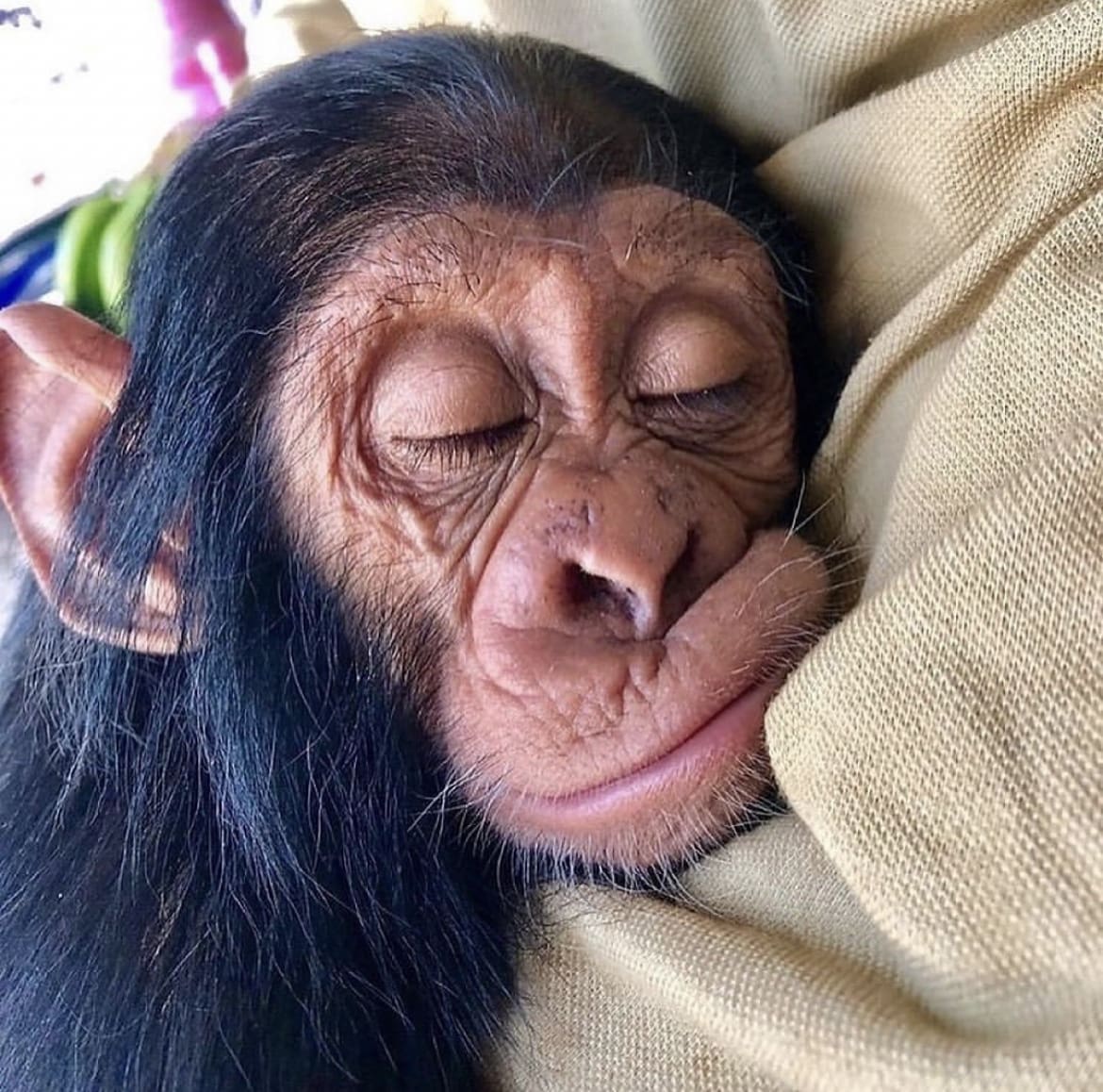
The True Cost of Chimpanzees as Pets
The idea of keeping a chimpanzee as a pet might be rooted in fascination, but the reality reveals a trail of consequences that are impossible to ignore. Behind the viral videos and sensational documentaries lies the suffering of intelligent, social animals ripped from their natural environment, stripped of their agency, and condemned to a life that no human home can adequately provide.
The dangers aren’t just to the chimpanzees themselves. Human caretakers, their families, and even the broader community are at risk from these powerful, unpredictable animals. Incidents like the tragic attack by Travis in Connecticut serve as grim reminders of the gap between how we perceive chimpanzees as pets and the harsh truth of their nature.
Yet the consequences extend far beyond individual cases. The exotic pet trade contributes to the decline of wild chimpanzee populations, a species already teetering on the edge of extinction. Poaching raids to capture infant chimps result in the slaughter of entire family groups, devastating ecosystems and further threatening biodiversity. Every chimp kept as a pet is a blow to conservation efforts and a step backward in our ethical responsibilities as stewards of the planet.
So why does this practice persist? Social media, with its curated images and viral videos, has played a significant role in perpetuating the myth of chimpanzees as manageable, lovable pets. While platforms profit from clicks and shares, they fail to show the years of trauma, mistreatment, and danger behind those fleeting moments of entertainment. This is not just misleading—it is morally negligent.
It’s time to recognize that chimpanzees, with their intelligence, emotional depth, and social complexity, deserve better than life in a cage or a backyard. They belong in their natural habitats or, when necessary, in accredited sanctuaries that can provide the care, space, and community they require. The growing public awareness around this issue is promising, but awareness alone is not enough.
Stricter legislation is needed to eliminate private ownership of chimpanzees and other primates. Public platforms must take responsibility for the content they allow and promote, ensuring it doesn’t glamorize or encourage harmful practices. And as individuals, we must resist the allure of exotic pets and instead channel our fascination into supporting conservation efforts that protect these extraordinary creatures where they truly belong.
Chimpanzees are not ours to own, control, or display for entertainment. They are wild animals with lives as complex and valuable as our own. The sooner we confront this reality, the closer we come to a world where humans and chimpanzees coexist—not as master and pet, but as species sharing this planet with respect and dignity.
The next time you see a viral video of a chimp in a diaper playing with toys, ask yourself: at what cost? It’s a question we all must grapple with—and one that demands a clear and ethical answer.
